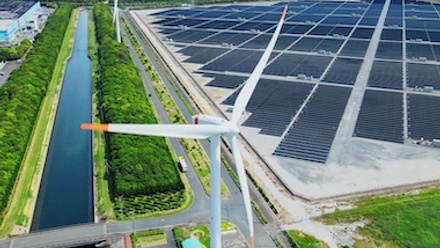The case for a climate aware approach to investing for workplace pension plans

So, what is investing responsibly, and what does it look like in practice?
Responsible investment
In 2012, a year-long review of UK equity markets and long-term investments was published, which called for the Law Commission to address uncertainties and misunderstandings surrounding fiduciary duty in relation to investment.
The report voiced concerns that some pension fund trustees “equated their fiduciary responsibilities with a narrow interpretation of the interests of their beneficiaries which focused on maximising financial returns over a short timescale and prevented the consideration of longer term factors which might impact on company performance, including questions of sustainability and social impact”.
As a result, the Law Commission published a report on pensions and the investment market, which explored fiduciary duties and to what extent pension trustees could consider ESG factors when investing on behalf of others. It concluded that pension trustees should take ESG factors into account when the issues were “financially material to the performance of an investment”.
Responsible investment therefore accounts for financially material long-term ESG risks. But, how is this done in practice?
ESG in pension investment
Increasingly, pension schemes are being required to consider ESG factors in their pension investment strategies in order to deliver sustainable returns over a long period of time.
Climate change is one issue that falls under the ESG category. With the race on to meet the Paris Agreement on climate change by ensuring that the global average temperature is kept below two degrees Celsius above pre-industrial levels, many pension funds are reviewing their investments in preparation for a low carbon economy. Two of the factors under consideration by pension funds are the strategy changes that a business plans to implement if it gains revenue from high carbon assets or produces products that emit greenhouse gases; and how climate change will affect a business and its operation – for example, risks of flooding or drought.
As countries worldwide move towards a low carbon economy, companies that fail to make the transition could dramatically lose their value in the long-term. To manage investments, a pension scheme – NEST, the master trust – has invested in a climate-aware fund, developed by its in-house investment team in conjunction with their global equities fund manager, UBS. The fund favours green and renewable energy companies and manages investment depending on how well a company is responding to changes driven by climate targets – investing in those that are taking positive steps forward, and reducing investment in companies that haven’t taken appropriate action.
Future returns
Long-term success and profitability are key objectives for any pension scheme, but by investing responsibly and with taking ESG factors into account, future pension returns for members are likely to be both protected and bolstered.
Climate change is one of many pressing social issues, but it’s also one that has serious and significant ramifications for pension members, especially if companies fail to adapt quickly to the changing environment. It’s becoming clearer that environmentally aware investment results in sustainable investment, and it will be forward-thinking pension providers that lead the way in terms of managing environmental risks, and improving pension returns, in the coming years.
This article was originally published in Financial Director in association with NEST on 12 December 2017, and is distributed here with their written permission.
This article was provided by NEST.
In partnership with Nest
We are the provider of choice for companies who care about the future of their workforce.







